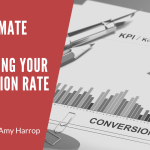 Have you ever gone out and had a mind-blowingly amazing meal? Can you remember how absolutely delicious it was? And more importantly, do you ever think about trying to recreate that level of awesomeness in your own kitchen?
Have you ever gone out and had a mind-blowingly amazing meal? Can you remember how absolutely delicious it was? And more importantly, do you ever think about trying to recreate that level of awesomeness in your own kitchen?
You probably could if you could manage to get your hands on one of those meals again.
All you’d have to do is deconstruct it to figure out the right ingredients and recipe to use to replicate the dish, or perhaps create something even better.
Have you ever thought about the ingredients and recipe needed to create a successful book?
You can apply the same process that you would for the meal and reverse engineer the success of any popular book in your niche. Then, you can use that knowledge as a guide to creating a successful self-published book of your own.
By reverse engineering proven success, you quickly and easily get to the root of what it is about any book in your niche that has managed to turn browsers into buyers, buyers into readers and readers into raving fans!
It all starts with the desired end result.
What Do You Want to Achieve with Your Book?
Before you can get into reverse engineering a successful book, you have to first establish what “success” means to you.
John Grisham is very successful, but so is the author who finally earns enough from self-publishing to be able to work from home and spend more time with their family.
Before you choose a book to reverse engineer, make sure that the success of its author aligns with what you hope to achieve in your own writing career. In other words, take the time to establish your personal success metrics.
- Sales Volume – How many books do you want to sell? Look for a book that has similar sales numbers to what you want to achieve.
- Media Coverage – Consider your preferred marketing style. Do you enjoy giving interviews and being the face of your book or do you prefer doing your marketing from behind the scenes?
Use your answers to select a model book that has either had the author featured prominently in mainstream media or where the focus is on more low-key promotional methods like guest blogging and Facebook marketing.
- Subsequent Book Releases – Will your book be a one-off project or do you want create a series of books?
If you want to improve your chances of creating a successful book series, reverse engineer a book that has already achieved that goal.
- Commitment Level – How much time and energy do you want to dedicate to creating and promoting your book?
The development and marketing process for a simple Amazon kindle book is very different from the one required to create and sell a blockbuster novel. Consider your personal limitations when you select a book you want to reverse engineer.
After you’ve established your definition of success, here’s what you need to look closely at in order to get to the root of why the book you’ve chosen was a hit.
Who was the book’s target audience?
Delve deeply into your model book to figure out who the target audience is.
It’s not enough to simply say you want to write a book and make some money. Pinpointing your target audience is imperative. The size of your market matters. As does the subject matter of your book.
If your goal is to sell many copies of your book it must have a very broad appeal. On the other hand, if a large sales volume is not important and you can achieve success by selling fewer books in a highly specialized market, it’s perfectly fine to choose a niche that is small and focused.
What did the target audience want the most?
If you don’t know what motivates prospects to buy you won’t have a very good chance of creating books that will have them shouting “Take my money!”.
The goal is to uncover the major motivating factor that moves prospects to buy and read your model book.
Uncovering your audience’s major desires and pain points is the key to creating the kind of book they want to read, from the title you choose to the cover design as well as the content to include in your manuscript.
What makes the book stand out?
Thousands of new books are published every single day, but only a handful of those ever really stand out and make a significant impact.
What is it about your model book that hooks readers and draws them in, in a way that most other books do not?
- Is it the major theme of the book?
- It is how developed the characters are?
- For fiction novels, is it how well the story is written?
- For non-fiction books, is it how thorough and well laid out the information is?
Figure out the key factors that work to separate your model book from all of the other offers in its niche, and that contribute to its success.
How strong is the author’s branding?
Branding has become one of the most important precursors to success because of the way that the internet has changed the marketing game.
Today, authors are more than just some mysterious entity hiding behind a pen name and a publishing house.
If you are a self-published author, along with reading your books your audience is even more keen to get to know more about who you are and what you stand for. Investigate the branding behind your model book. See how the author connects with their audience so that you can figure out a good unique selling point for your own brand.
Where is the book being promoted and sold?
Once your book is complete and ready to be sold, it’s important to showcase it through the right channels in order to get the most traction and sales possible.
Is there a dedicated sales page on the authors website or is the book also available through Amazon and other book selling platforms?
Reverse engineering an author’s promotion and sales strategies will give you a lot of insight to methods that work best for the specific niche and type of book.
Why do people love the book?
One of the best places to find invaluable information you can use to conceptualize, write and publish your own successful book is in the reader comments and reviews of your model book.
Visit the sales page of the book you are reverse engineering or join a forum conversation about the title. If you take the time to read through the reviews and comments associated with the book you are bound to uncover gold.
Look for clues as to why people who bought the book are happy that they did, and what they love about the book the most (Tip: 3 and 4-star reviews typically provide the best information).
Use the information you gather to gain insight into what people want from books in your niche, to generate ideas for your own manuscript and as a guideline for creating your own formula for success.
How much does the book sell for?
All other things equal, pricing is one of the major determining factors to whether or not your book sells at a rate that makes your self-publishing venture a success.
Check out the price points related to your model book.
- Was there an introductory price?
- Is the price, higher, lower or just about in line with other offers in the niche?
- Did the author do any free promotional giveaways before putting their book up for sale?
The answers to these questions will give you a good idea of how you can manipulate your selling price to get the best results from your efforts.
Success leaves clues.
If you want to create and market a stellar self-published book, begin by dissecting the anatomy of a super successful book in your niche.
You’re bound to discover the keys to crafting and marketing a winning book by beginning with the end in mind.




Leave a Reply